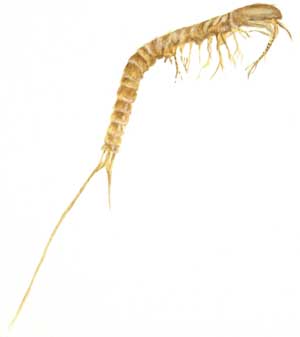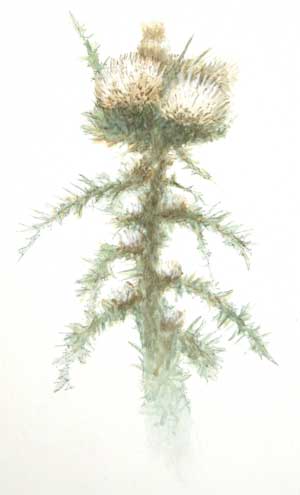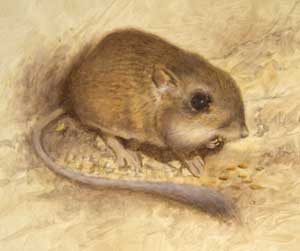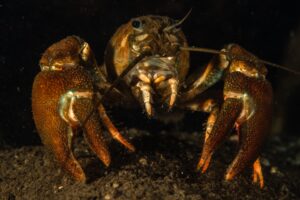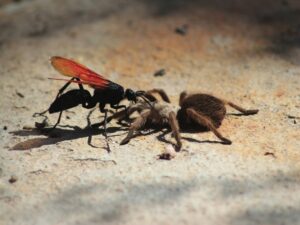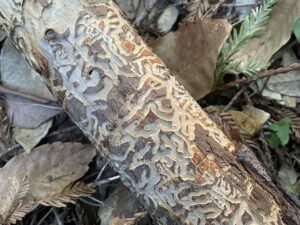How do you commission portraits of species the world has dismissed as extinct, species no one has seen in decades? That was the conundrum we at Bay Nature faced when it came time to solicit illustrations to accompany Presumed Extinct: Lost Species of the Bay Area.
To reanimate these lost species, Bay Nature tapped the minds and resources of natural history museums, herbaria, universities, and state and federal agencies throughout the country. With their invaluable help, and the unflagging efforts of their predecessors—the naturalists that braved Bay mud, house cats, and swarms of gnats on the road to discovering these species—we were able to fill in the puzzle pieces necessary to breathe life into the nine plant and animal species featured in Presumed Extinct. From there, the Bay Nature editorial staff worked closely with illustrator Devin Cecil-Wishing to turn back the clock 20, 50, sometimes 100 years or more to a time when these plants and animals were still clinging to survival.
In the case of the Strohbeens’ Parnassian and lotis blue butterflies, Bay Nature looked to the collections of Harvard University’s Museum of Comparative Zoology and New York’s American Museum of Natural History for digital photographs of specimens dating as far back as 1879. Devin was able to turn those pinned specimens into lifelike butterflies with guidance from U.C. Davis Professor Arthur Shapiro, author of the new Field Guide to Butterflies of the San Francisco Bay and Sacramento Valley Regions(UC Press).
The biggest difficulty Devin faced with the butterflies was ensuring the nondescript Strohbeen’s Parnassian wasn’t overshadowed by its showy host plant, the vibrant western bleeding heart. “The Parnassian was tricky,” he says, “trying to keep the attention on the butterfly. You have this dull beige butterfly on an incredibly bright pink flower. It was a trick to keep people from focusing [too much] on the flower.”
For the thicktail chub and Clear Lake splittail, we relied on a hybridization of preserved specimens (from Harvard University’s Museum of Comparative Zoology and the California Academy of Sciences) with photographs of similar-looking fish species, the tui chub, Chihuahua chub, and Sacramento splittail. U.S. Environmental Protection Agency ecologist Robert Leidy and U.C. Davis fisheries biologist Peter Moyle helped us navigate the murky waters that make these species unique, a tall order considering the wan, sickly orange specimens we had to work with. “Frankly, given the species is extinct,” Moyle quipped, “you have quite a bit of latitude on color!” Leidy reminded us that he was about two years old when the last thicktail chub was caught in the Delta. “I am not sure anyone knows what they look like alive,” he said. “You’ll have to wait until I find one to be sure!”
The sooty crayfish was resurrected from the terse text of its original description—”color blackish”—coupled with several taxonomic keys, a single pre-1958 black and white photograph, some pickled specimens from the Harvard University’s Museum of Comparative Zoology (the sooty’s type specimen was lost in the great 1871 Chicago Fire), and photographs of its state and federally endangered cousin, the Shasta crayfish. Since the sooty was last seen in the late 1800s, Leidy, Brigham Young University’s Keith Crandall, Carnegie Museum of Natural History’s James Fetzer, and the Philadelphia Academy of Natural Sciences’ Ray Bouchard helped us figure out what made the sooty crayfish so “sooty.”
Despite its obscurity and small size, the San Francisco horseshoe shrimp was one of the easier subjects to illustrate. With the original description at hand, together with a sketch by shrimp-seeker Rich Mooi (featured in the new book,
Animals of San Francisco Bay: A Field Guide to Its Common Benthic Species) and photographs and illustrations of other cephalocarids, Devin was able to illustrate the San Francisco horseshoe shrimp larger than life without getting his hands dirty.
In the wildflower department, Devin was fortunate enough to be able to view the Pitkin Marsh Indian paintbrush “in the flesh” (it is the only species we covered that survives in captivity). This paintbrush survives today at the University of California Botanical Garden at Berkeley due to the foresight of botanists in the field who were forced to stand by as the last few paintbrushes faded into extinction.
In anticipation of this incipient extinction, Larry Heckard of the Jepson Herbarium developed tissue cultures of the remaining plant as part of an eventual effort to reintroduce the species back into the wild. To date, researchers have successfully hybridized the Pitkin Marsh Indian paintbrush with another related species of paintbrush, but plans for reintroduction have yet to be realized.
With the cooperation of the botanical garden curator Holly Forbes, Devin was able to time his visit to catch the Pitkin Marsh Indian paintbrush in bloom. “It was a trip to think that this was the last one,” says Devin, “and they were wheeling it out for me!” Restorationist Rocky Thompson, who participated in eleventh hour protection efforts for the last wild plants, lent us a critical eye before Devin put the finishing touches on the paintbrush painting.
The phantom Palo Alto lost thistle was revegetated with the help of California Polytechnic botanist David Keil and California Department of Fish and Game botanist Mary Ann Showers. With so little to go on, both deferred to the original 1918 type description (in Latin) and the Harvard University Herbaria’s pressed holotype specimen upon which the description was based, as well as theFlora of North America’s key to the Asteraceae family.
The closest we came to a charismatic megafauna species (and the species Bay Nature staff grew most fond of) was our neighborhood Berkeley kangaroo rat. The k-rat was appropriately realized through another hybridization of photographs, this time between general k-rat photos and East Bay Regional Park District biologist Joe DiDonato’s photographs of his presumed extant Berkeley kangaroo rats from Ohlone Regional Wilderness. DiDonato and k-rat hunter Gary Beeman helped us refine the morphological features specific toberkeleyensis; the genetic makeup we’ll leave to the experts.
From the project’s inception, Devin worked hard not only to recreate these species, but also to create a sense of their place—or, rather, their placelessness—in history. “One thing I’m drawn to in general is older natural history paintings like Audubon’s. I was trying to get an old-timey feel, like these animal may be gone, to evoke a mysterious quality to the project.”
All of the illustrations were done in oil on gessoed wood panels. Starting from the reference material we provided, Devin made line drawings of each species to determine layout and proportions. Since capturing the right colors was critical, Devin relied on a digital trick, scanning each sketch to a digital file that he could print out and paint on, over and over if need be, until he hit upon the right color combinations. Once the preliminary color sketches were approved by Bay Nature and our host of on-call experts, Devin went back to the drawing board—literally—starting each illustration from scratch on individual wooden panels. Each panel was prepared with gesso, a painting surface consisting of plaster of Paris and glue. Then Devin took his original pre-scan sketches and transferred them to panels using carbon graphite paper. From there, it was simply a matter of painting the final portraits using his sketches as guides.
In addition to the above-mentioned experts, special thanks are also in order to the following individuals and their institutions who helped us acquire the necessary type and non-type specimen photos, historical literature and background material, species descriptions and illustrations, and taxonomic keys critical to the background research that went into both the article and the illustrations: Karsten E. Hartel, Ardis Johnson, Van Wallach, Phillip Perkins (Museum of Comparative Zoology, Harvard University), David Grimaldi (American Museum of Natural History), Richard Arnold (Entomological Consulting Ltd.), Margriet Wetherwax (Jepson Herbarium), Jerry Powell (University of California, Berkeley/Essig Museum of Entomology), Jon Fong (California Academy of Sciences), Drew Murphy (University of Nevada, Reno), and Robert Preston (Jones & Stokes).

.jpg)

